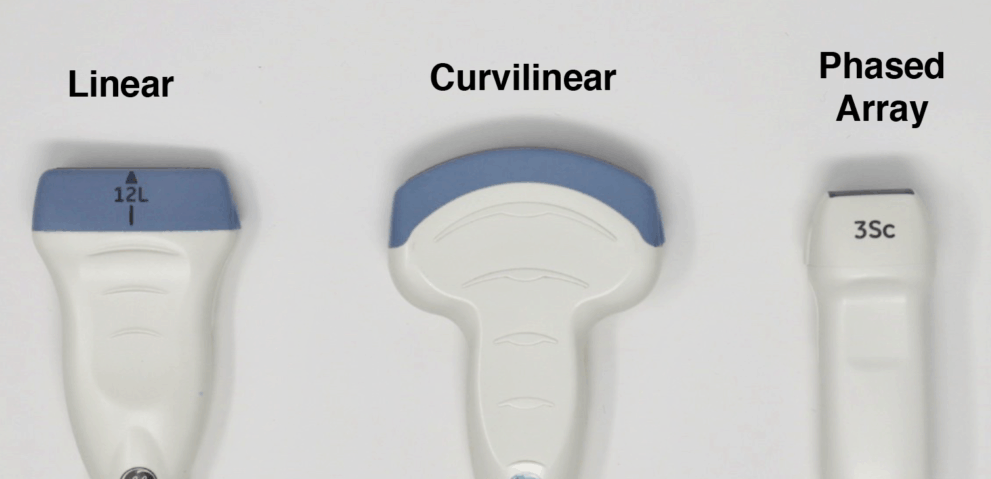Ultrasound probes, called transducers, produce sound waves that have frequencies above the threshold of human hearing (above 20KHz), but most transducers in current use operate at much higher frequencies (in the megahertz (MHz) range).
Hold the probe and move it like a pen. Use your other fingers to stabilize the probe against the patient as you view the ultrasound monitor. Optimize imaging. Try to avoid bone and gas, which are hyperechoic and can hide structures of interest.
The principle of ultrasound probe: Ultrasound transducers contain piezoelectric crystals that, when electrical impulses are applied, produce waves at frequencies determined by the crystal’s propagation speed, divided by two times the thickness of the crystal layer.
The classification of ultrasound probes: It can be divided into two types: single-element transducer reciprocating swing scanning and multi-element transducer rotating switching scanning probe according to the number of piezoelectric chips and motion methods.
Ultrasonic sensors can measure distance and detect the presence of an object without making physical contact. They do so by producing and monitoring an ultrasonic echo. Depending on the sensor and object properties, the effective range in air is between a few centimeters up to several meters.
The indicator on the ultrasound probe: The “probe indicator” on the ultrasound probe can be identified as an orientation marker (ridge, indentation, groove, or nub) on one side of the probe. This corresponds to the indicator or orientation marker on the ultrasound image.



Reviews
There are no reviews yet.